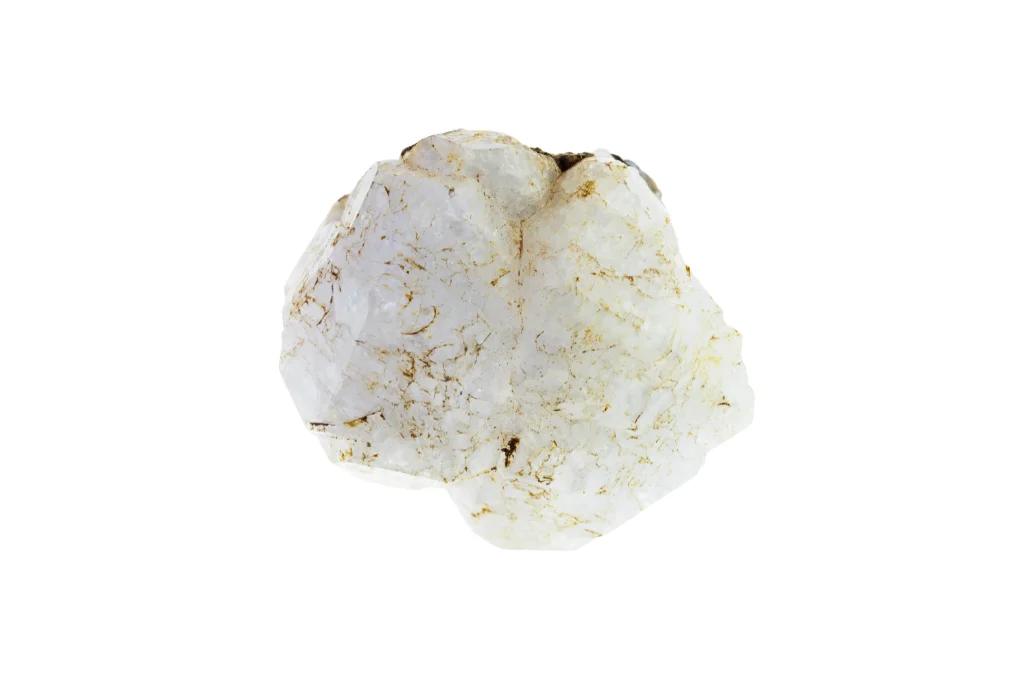Physical Appearance of Analcime
Analcime, a hydrated sodium aluminum silicate mineral, typically presents itself in a cubic crystal system. This mineral is renowned for its distinctive trapezohedron crystal shape, which gives it a unique and easily recognizable appearance. The trapezohedron form consists of 24 faces, each shaped like a kite, creating a complex and visually striking geometric structure.
Color Variations
While pure analcime is colorless and transparent, it often occurs in various shades due to impurities or inclusions. Common colors include white, grayish-white, and pale shades of pink, green, or yellow. Some specimens may even display a subtle luster, adding to their visual appeal. The color variations contribute to analcime’s charm and make it an interesting subject for mineral collectors.
Structural Characteristics
Analcime’s structure is characterized by its framework of interconnected silica and alumina tetrahedra. This framework creates small cavities within the crystal, which can hold water molecules and sodium ions. This unique internal structure contributes to analcime’s ability to act as a natural zeolite, allowing it to absorb and release water without significant changes to its crystal structure.
Notable Physical Properties
One of the most distinctive features of analcime is its moderate hardness, ranging from 5 to 5.5 on the Mohs scale. This makes it softer than quartz but harder than many other zeolites. Analcime also exhibits a conchoidal to uneven fracture and a vitreous to dull luster. These properties, combined with its unique crystal form, make analcime a standout mineral in any collection or natural formation.
Historical and Cultural Significance of Analcime
Analcime, a zeolite mineral, has been known to mineralogists and geologists for centuries. While not as widely recognized as some other gemstones, it has played a role in scientific research and industrial applications. Historically, analcime was prized by collectors for its unique cubic crystal structure and its occasional trapezohedral form.
Metaphysical Associations
In the realm of crystal healing and metaphysical practices, analcime is believed to possess several beneficial properties. It is often associated with mental clarity and is thought to enhance one’s ability to focus and concentrate. Some practitioners claim that analcime can help balance emotions and promote a sense of inner peace. It is also said to facilitate communication with higher realms and enhance spiritual growth.
Common Uses and Applications
Analcime finds its most significant use in industrial and scientific applications. As a zeolite, it has excellent ion-exchange properties, making it valuable in water treatment processes. It is used in the removal of heavy metals and other pollutants from water. In the petroleum industry, analcime is utilized as a catalyst in various refining processes. Additionally, it serves as an important indicator mineral in geologic studies, helping scientists understand the formation and alteration of rocks.
Traditional and Modern Benefits
Traditionally, analcime has been used in crystal healing practices to address mental and emotional issues. It is believed to help clear the mind, reduce stress, and promote rational thinking. In modern alternative healing practices, analcime is sometimes used to support meditation and mindfulness exercises. Some people keep analcime crystals in their work or study areas, believing it enhances concentration and problem-solving abilities. While these benefits are not scientifically proven, many individuals report positive experiences with this mineral in their personal wellness routines.

